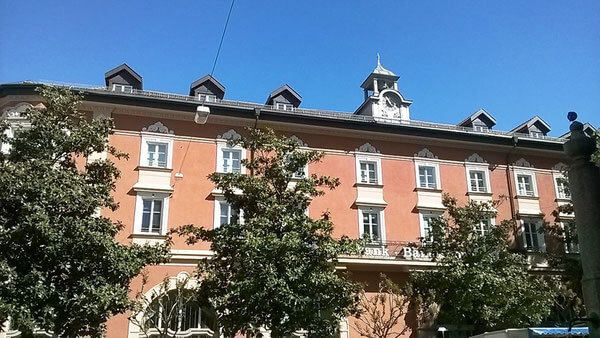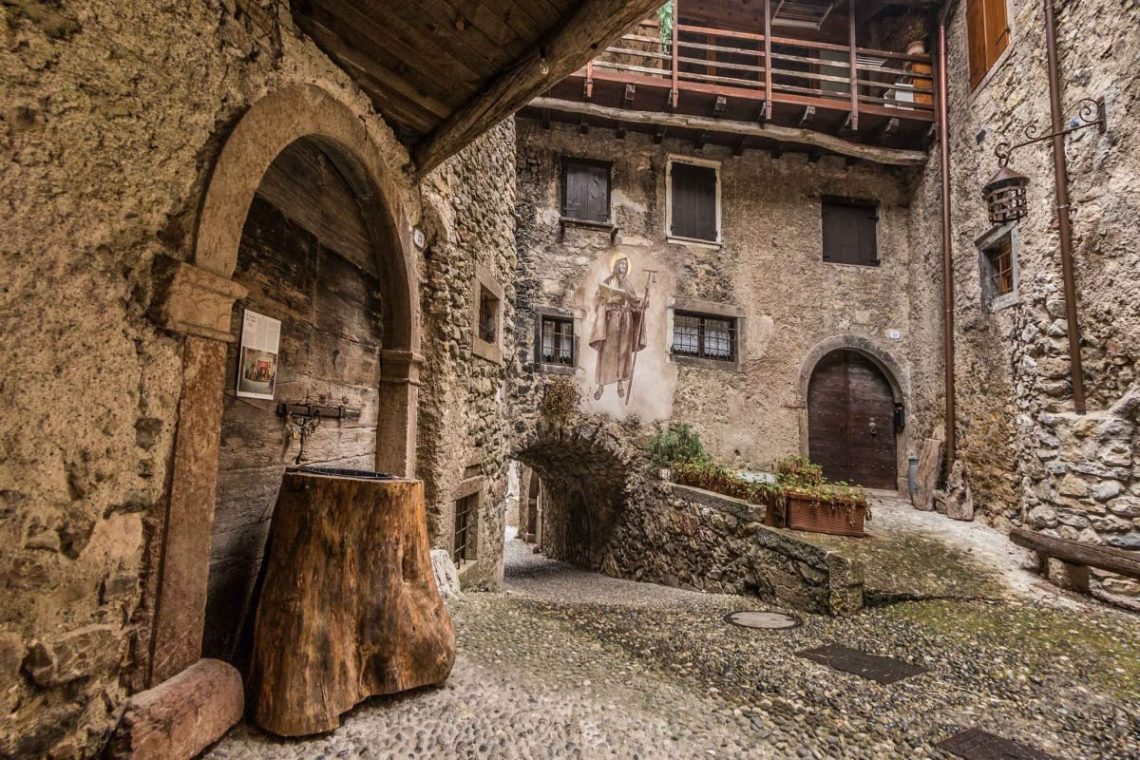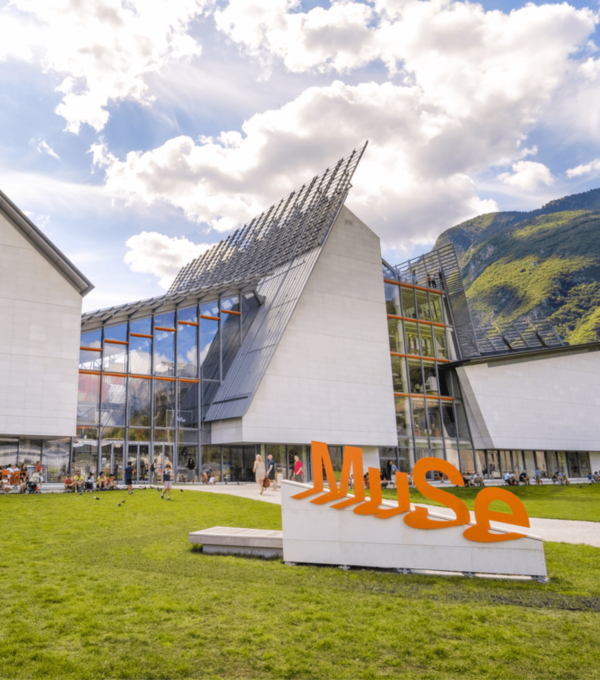Trentino is a region of northern Italy famous for its natural beauty, one of all the Dolomites, the “pale mountains” for the Trentino, since 2009 World Heritage.
If there are many sports and cultural activities that offers its visitors even slow tourism finds its home here, between mountain lakes woods and valleys. Here is Trentino in a nutshell!
Trentino-Alto Adige is a territory that offers many tourist attractions, both for nature lovers and for art and culture lovers both in summer and in winter.
From breathtaking landscapes with enchanted forests, crystal clear streams and alpine lakes that are reflected in the mountains to places rich in history and culture until you get to the cuisine: Trentino in pills is the essential guide that summarizes all that the region has to offer.

issimoissimo
Where is the Trentino region
Trentino is a region located in northern Italy, precisely in the central part of the Alps, bordering Lombardy to the west, Veneto to the south and east and Austria to the north.
As the name Trentino-Alto Adige and the position on the map suggest, the autonomous region with special status is divided into two areas characterized by different cultural and linguistic elements: Trentino where Italian is spoken and South Tyrol where German culture is spread alongside the Ladin minority.
The regional capital of Trentino-Alto Adige is Trento, but the territory also embraces the provinces of Bolzano and Trento.
It is a very popular tourist destination both in winter and in summer for those looking for a real holiday in contact with nature and culture, where you can live unforgettable emotions and discover real hidden treasures.

viaggi.corriere
Trentino, what to see and do
Trentino is an Italian region rich in history, nature and culture, offering numerous opportunities for visitors of all kinds. What is the most beautiful place in Trentino? Where to go for the first time in Trentino? Here is an overview of some of the most interesting things to see and do in this region.
- Places not to be missed- Trentino is full of interesting cities to visit: Trento, Merano, Rovereto, Riva del Garda and Bolzano. These cities are rich in history, art and culture and offer many places of interest such as museums, churches and castles.
- Natural landscapes – What is the most beautiful part of Trentino is difficult to say. The region is famous for its natural landscapes, including the Adamello Brenta Natural Park, the Paneveggio Pale di San Martino Natural Park, the Dolomites Natural Park and Lake Garda. Do not miss the Val di Non. There are many hikes and walks to do both in the mountains and in the plains and you can enjoy nature in many other activities such as hiking and horseback riding, climbing, cycling and much more.
- Ski areas – Trentino is a holiday destination for ski lovers, with a wide selection of ski areas, both for beginners and for experts. Among the most famous are Madonna di Campiglio, Val di Fassa-Carezza and Val di Sole.
- Castles – The region is also famous for its medieval castles, which were built to defend the region from enemy invasions. The Buonconsiglio Castle in Trento, the Arco Castle, the Beseno Castle in Besenello and the Stenic Castle in Val Giudicarie are among the most popular.
- Culture – Trentino is rich in history and culture. Among the places not to be missed are the Museum of Science, the MART, or Museum of modern and contemporary art of Trento and Rovereto and the Sanctuary of San Romedio in Coredo.
- Spa – The region also offers many spas and spas, where you can enjoy rejuvenating treatments and relax. Among the most famous are the Terme di Merano, the Terme di Levico and the Terme di Comano.
Trentino and food and wine tourism
The region boasts a richly contaminated cuisine from adjacent Austria. In fact, thanks to its geographical position and its history, it combines Italian, Austrian and German influences.
The Trentino cuisine is based on local products of the highest quality, such as pork used to prepare bacon, sausage and other dishes and cheeses such as Puzzone di Moena and Trentingrana.
Among the traditional dishes there are dumplings (meatballs made of stale bread, bacon and cheese served in broth or with melted butter and cheese); spätzle (fresh pasta served with sausage, bacon and melted cheese); polenta (prepared with yellow corn flour); potato tortel (potato-based tart, cheese, onions and speck); strudel (puff pastry cake filled with apples, raisins, cinnamon and nuts).
The territory is famous for its fine wines, thanks to the presence of native vines, such as Teroldego and Marzemino. These wines perfectly match the dishes of Trentino, enhancing the flavors and characteristics of each dish.

cottoecrudo
Trentino: festivals and events
Trentino is a land of ancient traditions and typical festivals that celebrate the excellence, culture and beauty of the territory in a unique way.
Being a land chosen for the production of fine wines, Trentino hosts theme parties such as, for example, the Grape and Wine Festival that takes place in Trento with wine tasting and guided tours of the cellars.
The Feast of San Martino is also on the same trail because it pays homage to the end of the harvest with tasting of the new wines of the season, processions and musical performances.
To this is added the Festival of Canederlo of the town of Fassa: it is the celebration of one of the typical dishes of Trentino cuisine.
The Feast of San Vigilio celebrates the patron saint of the city of Trento through processions, musical performances and fireworks.

visittrentino
The history of Trentino-Alto Adige
Trentino is a region rich in history and traditions; it is not by chance that it has been a place of settlement of hunters from the Po Valley and the Venetian Pre-Alps since prehistoric times.
Later, it was inhabited by the Reti (people of Etruscan origin who settled in the various valleys building villages and devoting themselves to hunting and agriculture) and passed under Roman rule (which is responsible for the establishment of Tridentum). During this period, it became an important commercial crossroads and pushed to the completion of the Via Claudia Augusta Padana the Roman road that reached the Resia pass from Ostiglia and the Via Claudia Augusta Altinate that started from the port of Altino and arrived at Tridentum.
In the early Middle Ages, it was invaded by the Ostrogoths, Bavarians, Lombards and Franks and was evangelized by various clerics and bishops supported by the Catholic Church. It is only with the Lombard domination that a concept of territorial unity begins to develop.
Around the end of the eighteenth century, thanks to the domination of the Franks, it became part of the Italian Kingdom and then within the framework of the Carolingian Empire. However, he became involved in dynastic succession struggles. After the death of Charlemagne, in fact, the division of territories led to the annexation of Trento, the Adige Valley and the areas near Merano to the Kingdom of Italy and other valleys to the Franco-Eastern kingdom.
After a period of instability, Trentino became part of the Holy Roman Empire of Germany around the middle of the twentieth century after Christ.
In the year one thousand came the time of the Tridentine Episcopal Principality by Henry II, bringing to the union of western and central Trentino, western and central South Tyrol, eastern part of Trentino (with the exception of Primiero, Valsugana orientale and Val di Fassa).
The impossibility of the Bishop of Trento to directly exercise capital punishment and to deal with military matters led to the arrival of trusted feudal lords such as the Counts of Tyrol (who nevertheless affected the power of the bishop). The counts managed to take control of South Tyrol and North Tyrol. Thus the present Trentino and the Adige plain remained in the Principality of Bolzano while the city of Bolzano was governed jointly by bishop and count.
Around the fifteenth century, it ended up gravitating into the Republic of San Marco, borrowing the breeding of silkworm and mulberry and becoming a reference point for the merchants of Nuremberg. So, Venice decided to expand its hegemony.
To stop the Republic of San Marco was the League of Cambrai: the Principality saw new light within the Tyrolean-Habsburg control and was reorganized both administratively and militarily.
After being involved in the War of the Spanish Succession and the expansionist campaigns of Napoleon, the territory passed under the rule of the Habsburgs in the nineteenth century, who maintained control until the end of World War I.
In the twentieth century, it was annexed to Italy after the signing of the Treaty of Saint-Germain while it was subject to a policy of Italianization that sought to erase the cultural and linguistic identity of the region during the Fascist period.
In addition to the reconstruction of the countries affected during the war, in fact, began to develop as a tourist destination, thanks to the beauty of its landscapes and the richness of its historical and cultural sites.
At the turn of the sixties and seventies, it underwent a further transformation, with the expansion of the tourism industry and the service sector. The region has begun to invest in tourist infrastructure, such as ski resorts and hiking trails, which have made Trentino an even more attractive destination for tourists.

visittrentino
Come raggiungere il Trentino
Il Trentino è una regione situata nel nord Italia ma, nonostante la sua posizione geografica, può essere raggiunta facilmente in auto, in treno o in aereo.
Se ci si muove su strada allora si può arrivare in Trentino attraverso l’autostrada Brennero- Modena A22, che attraversa la regione ed è collegata con Milano.
In treno, la stazione centrale di Trento è servita da numerose linee, con collegamenti da e per le principali città italiane e non solo. In particolare, la linea ferroviaria del Brennero collega la città con Innsbruck e altre località austriache.
Inoltre è possibile atterrare in cinque aeroporti situati nelle provincie vicine: il Marco Polo di Venezia, l’Antonio Canova di Treviso, il Valerio Catullo di Verona, l’Orio al Serio di Bergamo e l’aeroporto di Bolzano-Dolomiti di Bolzano. Da ognuno ci sono numerosi servizi di trasporto pubblico per raggiungere la zona.
Non solo auto, treno e aereo. Il Trentino offre una vasta scelta di soluzioni per muoversi all’interno della regione, con una rete di autobus, treni locali e taxi. Scegliete un motivo qualsiasi per andare in Trentino, non ve ne pentirete.
Copertina: planetofhotels



